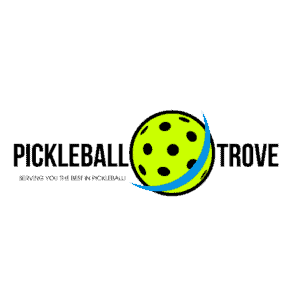
Pickleball, once a backyard family game, has transformed into a global sensation, drawing participants of all ages and athletic backgrounds. Its simple rules and accessible nature have made it an increasingly popular choice for recreational play and organized tournaments alike. Whether you’re a curious beginner or an aspiring pro, understanding how pickleball is played in tournaments offers a glimpse into the competitive spirit and allure of this rapidly growing sport.
What is Pickleball?
At its core, pickleball is a paddle sport that combines elements of badminton, tennis, and table tennis. Played both indoors and outdoors, the game requires a perforated plastic ball, paddles, and a net. A pickleball court is similar in size to a doubles badminton court, with specific modifications, especially around the net and the crucial “non-volley zone” or the “kitchen.”
The Structure of Pickleball Tournaments:
- Format: Most pickleball tournaments follow a double-elimination format, which means a team or player must lose twice to be out of the tournament. However, some tournaments utilize round-robin, single elimination, or even ladder formats.
- Categories: Tournaments are often categorized based on skill level and age. Skill levels range from beginner to advanced (often rated from 2.5 to 5.0 or higher), while age categories might be segmented into youth, 19+, 35+, 50+, 60+, and so on.
- Doubles and Singles: While pickleball is predominantly played as doubles (two players on each side), there are singles tournaments available for those who prefer a more physically demanding challenge.
- Mixed Doubles: In addition to men’s and women’s doubles, there’s a category called mixed doubles where male and female players team up, allowing for different dynamics and strategies.
Playing Rules in Tournaments:
- Serving: The serve initiates play and must be executed diagonally to the opponent’s service court. The ball should be hit below waist level without bouncing, and only one serve attempt is allowed, unless it’s a “let” (when the ball touches the net but still lands in the service court).
- Scoring: Only the serving team can score points. The game is typically played to 11 points, but a team must win by at least 2 points. Some tournaments extend the play to 15 or even 21 points.
- Double-bounce rule: After the serve, each side must make at least one groundstroke, meaning the ball should bounce once on each side before volleys are allowed.
- Non-volley zone (NVZ): Players can’t volley the ball (hit it before it bounces) if they’re standing in the NVZ. This rule leads to the strategic “dinking” battles at the net, where players attempt to outmaneuver their opponents with soft shots.
- Time-outs: Players can call for time-outs, which are usually 1 minute in duration. These are strategic pauses used to regroup, rest, or break the opponents’ momentum.
Preparation for Tournament Play:
- Training: Regular practice sessions focusing on skill drills, match simulations, and strategy implementation are essential. Physical conditioning also plays a vital role, especially in larger tournaments that can span several days.
- Equipment: Tournament-approved paddles and outdoor or indoor balls (based on the venue) are essential. Players often also invest in specialized shoes, moisture-wicking attire, and protective eyewear.
- Mental Preparation: The mental aspect of pickleball is just as crucial as the physical. Visualization, mindfulness, and focus drills can significantly benefit players, especially in high-pressure situations.
Sportsmanship in Tournaments:
The pickleball community places a significant emphasis on sportsmanship. Whether it’s respecting the referees’ decisions, acknowledging the opponents’ good shots, or maintaining decorum during disagreements, good sportsmanship is at the heart of pickleball’s ethos. This spirit often fosters camaraderie among participants, even in highly competitive settings.
The Growth of Competitive Pickleball:
Over the years, the number and prestige of pickleball tournaments have grown exponentially. Events like the US Open Pickleball Championships and the USA Pickleball National Championships are grand spectacles, drawing top players and sizable audiences. The prize money, media coverage, and professional opportunities in these tournaments are a testament to pickleball’s meteoric rise.
Conclusion:
Pickleball tournaments encapsulate the sport’s essence, combining athleticism, strategy, community, and fun. As more players discover the joy of pickleball, the tournament scene is set to become even more vibrant and competitive. If you’re looking to immerse yourself in this dynamic world, there’s no better time than now. Whether you aim to lift a championship trophy or just enjoy the thrill of competition, pickleball tournaments promise a unique and unforgettable experience.

